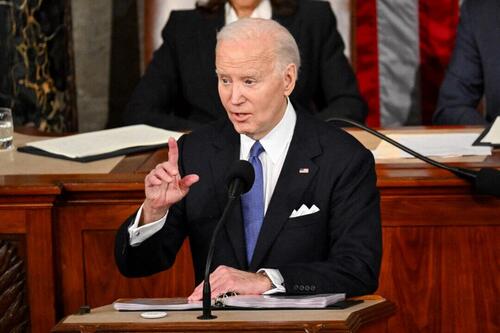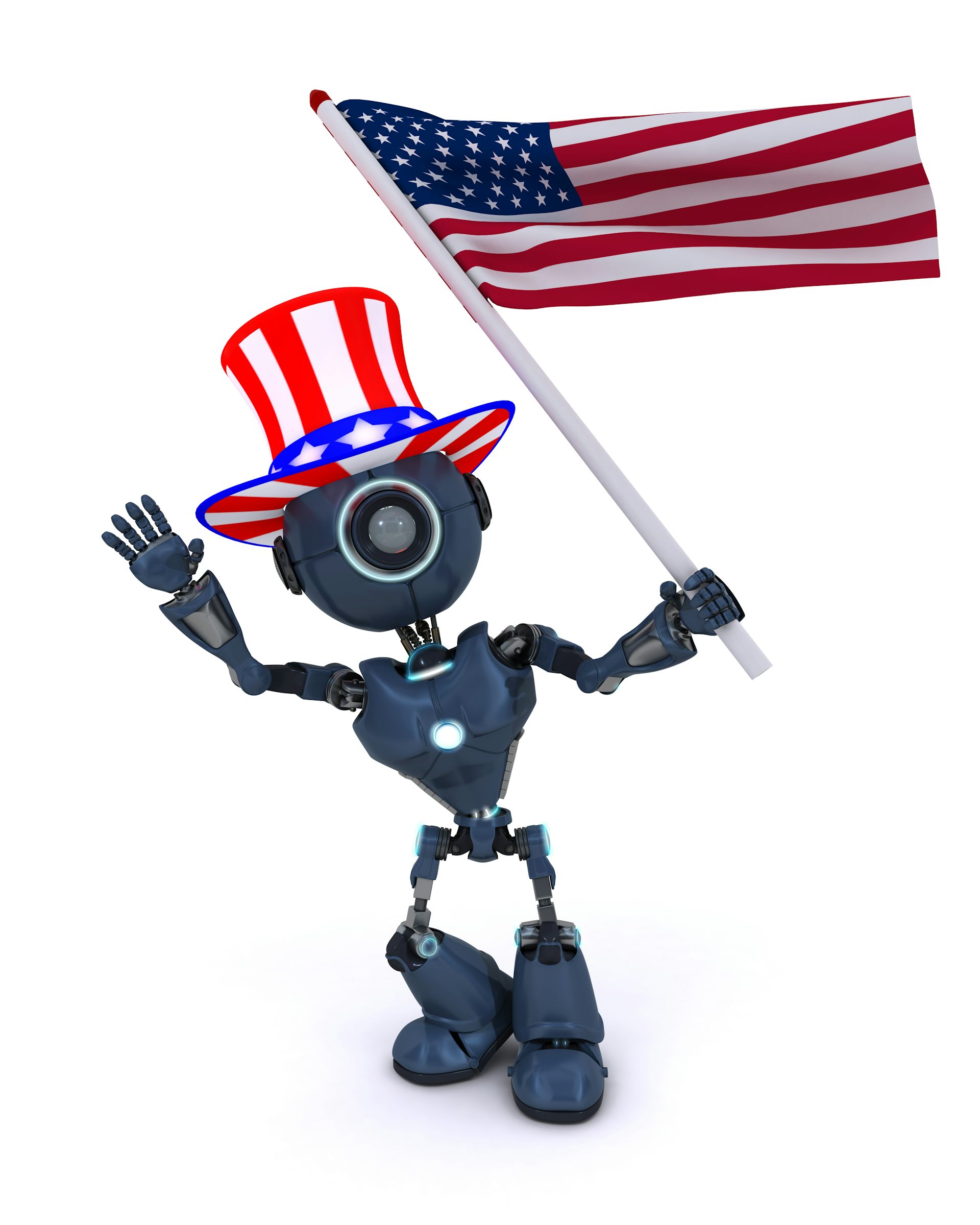The US dollar was driven to new highs for the year in recent weeks by a combination of another signal that the Federal Reserve was still on track to taper before the end of the year and concerns about global aggregate demand. The spread of the contagion has exacerbated the slowdown already seen in parts of Asia. China's efforts to curb steel output and recognition that the US infrastructure initiative may be smaller than expected were separate sources of pressure on industrial commodities. In addition, the partial closure of Chinese ports, and factory shutdowns in Vietnam and elsewhere, are disrupting supply chains. China's August Composite PMI fell below the 50 boom/bust level for the first time since February 2020.
Re-stocking could help moderate the slowdown projected as the fiscal and monetary stimulus in the high-income countries move past their peaks, pent-up demand is satiated, savings drawn down, and excesses from several quarters of rapid growth are unwound. While the US debt ceiling issue has not been resolved, some income support programs, including emergency federal unemployment compensation, end early September. Also, the UK's furlough program that absorbed part of the wage bill expires at the end of September.
The shortage of semiconductor chips continues to hobble the auto sector. Even some companies that had fared well in the early days are adversely impacted by the extended shortage. Volatile weather of floods, droughts, heat, fires, hurricanes, and tornados are additional exogenous shocks. In some areas, like Louisianna and Mississippi, hospital capacity to deal with disasters has been absorbed by the high cases of covid viruses. The UN's Intergovernmental Panel on Climate Change issued in early August warns climate change is proceeding faster than scientists previously projected. The Federal Reserve joined the Network of Central Banks and Supervisors for the Greening of the Financial System at the end of last year. More than 75 other central banks are members as well.
China's economy has slowed, and the PBOC responded in July with a cut in reserve requirements. However, it has not cut interest rates, and the market does not expect it to. Rather, another cut in reserve requirements is seen to be more likely in Q4. In addition, China's strong stance on issues that resonate among the high-income countries, from data collection and the power of some internet companies to the re-invigorated anti-trust, may be deterring domestic and international investors. However, it will take some time to determine whether it is tactical or what appears as capricious actions discourage asset managers and slow China's integration into the global capital markets. Early indications point to the former rather than the latter.
In March, the ECB ratcheted its bond-buying efforts under the Pandemic Emergency Purchase Program and will review the decision at the September 9 meeting. More important than the amount purchased is its signals for its future course. Most likely, it can kick the decision to the December meeting. The PEPP is to run until the end of Q1 22. Without increasing the "envelop," it could extend the program. Stretching it out might offer a workable compromise with the more hawkish members while buying time to see the evolution of the virus, fiscal policy, and the economy. That said, news that the preliminary August CPI jumped to 3.0% may offer the hawks powerful ammunition. German inflation (3.4% year-over-year in August) is higher than the eurozone aggregate. Countries with less price pressures (e.g., Italy 2.6%) gain competitively over Germany.
The minutes from the July FOMC meeting confirmed that it can begin reducing its bond-buying by the end of the year, barring a new significant downside shock. Inflation is well above 2%, and nonfarm payroll growth has averaged 830k in the three months through July. Another 750k are expected to have been hired in August. At the conclusion of the FOMC meeting on September 22, the Summary of Economic Projections (dot plot) will be adjusted. In the June reiteration, only seven of the 18 Fed officials thought a hike in 2022 would be appropriate, and two thought two hikes might be. Judging from the Fed funds futures strip, the market has nearly priced in a hike at the September 2022 FOMC meeting but only has a small chance of more than one move next year.
Powell used his Jackson Hole speech to remind investors and businesses that there are different criteria for hiking than tapering. Officials want to avoid the market getting too far ahead and prematurely tightening financial conditions. On the other hand, around the same time as the Federal Reserve slows its bond purchases, the US Treasury will likely begin reducing its issuance, as the expenditures slow and revenues recover with the strengthening economy. Still, investors are aware that the previous attempts to reduce the Fed's balance sheet (2011, 2015, 2018) have coincided with a correction in stocks.
Several emerging market central banks will continue their monetary tightening cycle in the month ahead, including Russia, Brazil, and the Czech Republic. After hiking in July and August, the central bank of Mexico may pause. There are only a few central banks for which the next move is likely easier policy. It is clear that Turkey's Erodgan wants to see lower rates, but the central bank is holding off as inflation remains high. The August CPI report is due September 3. It needs to rise by less than it has any month this year if the year-over-year rate is to ease from July's 18.95%.
Politics will also be among the September highlights. Two G7 countries, Germany and Canada, go to the polls. At the same time, in a third, Japan, the largest political party, the Liberal Democrats, will hold a leadership contest that could replace Prime Minister Suga. Merkel has led Germany since 2005. There will be a new Chancellor (September 26). Laschet, the CDU party leader, has run an uninspiring campaign, and his apparent claim to fame is that of continuity. Yet, judging from the CDU's poor showing in the polls, voters want a change. Indeed, it is becoming more likely that an SPD-led coalition (with Greens and FDP) could form the next government. A change in power in Berlin could help shape the coming debates in Brussels about making permanent some measures adopted during the emergency.
Canada's Prime Minister Trudeau is opportunistic in calling for a snap election now (September 20). He has been leading a minority government for two years. The success of the inoculation efforts, after a slow start, and an economy emerging from the earlier soft patch provides for a conducive backdrop. However, the Liberals have a difficult time in the western provinces, and it is not clear if they can regain their majority after losing it in 2019. Moreover, Trudeau's campaign initiatives seem to be tacking to the left, perhaps on ideas that it may be easier to pick up NDP or Green voters than Conservatives.
Norway heads to the polls on September 13. Erna Solberg, who has led the Conservative Party since 2004 and has been Prime Minister since 2013, will likely be denied a third term. Instead, voters look to allow the Labour Party to forge a coalition. Although Solberg was given high marks on handling the pandemic (Norway has one of the lowest mortality rates related to Covid-19 in Europe), she has fallen afoul of a backlash against economic disparities and unpopular public sector reforms. Labour is running on a platform calling for tax relief for the low and middle class, an end to the privatization of public services, and more funds for public health. In addition, it calls for an income tax hike on the top 20% of incomes. Ten days after the election, regardless of its outcome, the central bank has indicated it will most likely lift the deposit rate, which has been at zero since May 2020. It was at 1.50% at the end of 2019.
Bannockburn's World Currency Index, a GDP-weighted measure of the top 12 economies, fell to four-month lows last month, as the dollar outperformed. In fact, there were only two currencies in the basket that appreciated against the dollar: the Indian rupee, which rose by nearly 2% and the Brazilian real rose by 1.1%. Sterling, the Canadian dollar, fell a little more than 1%. August's slippage left the BWCI with a 0.7% loss for the year.
Of note, we adjusted the weightings of the index once a year based on the World Bank's estimate of the previous year's GDP. The following charts show the new composition and the change from the previous iteration. As one would expect, changes are small. The US economy proved more resilient than most in 2020, and the dollar's share of the index edged a little higher. So do China's share and the weight of the yuan. The yen's share increased slightly as well. The euro and the UK underperformed, and the weight of their currencies was shaved. It does seem as if the pandemic is slowing India's move past the UK to be the fourth largest in our GDP-weighted index.
Dollar: On a real broad trade-weighted basis, the dollar rose for the third consecutive month in August but is about 1% lower than a year ago. The US two-year premium over Germany gradually rose from testing the year's low near 80 bp in the second half of May to almost 100 bp in the first half of August, illustrating the conviction that the Fed will be well ahead of the ECB in lifting rates. Although only a minority (7 of 18) Fed officials in June thought a hike next year would be appropriate, the market has one fully discounted. At the conclusion of the FOMC meeting on September 22, new economic projections will be made, and the market is anticipating more color about the tapering. Many observers have focused on the Fed's purchases but may have missed that starting with the next quarterly refunding, the Treasury's issuance is expected to begin declining. Moreover, indirect bidders, often foreign central banks and multilateral lenders, have been particularly strong at recent note auctions. Meanwhile, federal income support programs, including emergency unemployment compensation, coverage for gig workers, will end shortly, and the moratorium on evictions has been terminated by the courts. Most recently, increased covid infections are weighing the economy, with restaurant bookings, air travel, consumption, and confidence measures all weakening. The data surprise models have gone negative.
Euro: The euro was turned back from the $1.19 area at the start of August and was sold to new lows for the year near $1.1665 before recovering at the end of the month to almost $1.1850. The conviction that the ECB will lag behind the Federal Reserve in the monetary cycle weighs on sentiment. Still, the ECB has to make decisions shortly or see its Pandemic Emergency Purchase Program end before the Federal Reserve's tapering is completed. It also buys bonds under a separate program, which is not nearly as flexible as the PEPP. So far in Q3, the euro has been mostly confined to a $1.17 to $1.19 trading range, and it may persist. The large speculative long position in the futures market has been unwound and in late August was the smallest since March 2020. The tragedies in Afghanistan and Syria may pose a new refugee challenge for Europe while the political climate is in flux. By the end of September, Germany will have a new Chancellor for the first time since 2005.
(August 31 indicative closing prices, previous in parentheses)
Spot: $1.1810 ($1.1870)
Median Bloomberg One-month Forecast $1.1810 ($1.1885)
One-month forward $1.1820 ($1.1880) One-month implied vol 5.4% (5.3%)
Japanese Yen: The dollar-yen exchange range often seems to be range-bound, which has clearly been the case for the three months through August. With a couple of exceptions, the greenback has been between JPY109 and JPY111. It ended the month in the middle of the range. A spike lower would likely be associated with a risk-off event. A break higher would likely coincide with a rise in US yields. The expanded and extended formal emergency, which is voluntary, covering more than 70% of the population through nearly the middle of September, pushes the recovery into Q4. The Bank of Japan could downgrade its economic assessment when it meets on September 22. While the Liberal Democratic Party may find an alternative leader to Prime Minister Suga, but an alternative to the broad thrust of policy is a different story. Meanwhile, the way that Beijing has clamped down on Hong Kong and its harassment of Taiwan have pushed Japan's political elite to boost its commitment to defend Taipai. Some retaliatory action by Beijing should not be surprising.
Spot: JPY110.00 (JPY109.85)
Median Bloomberg One-month Forecast JPY110.00 (JPY109.85)
One-month forward JPY109.95 (JPY109.80) One-month implied vol 5.2% (5.4%)
British Pound: Sterling was turned back after approaching $1.40 at the end of July and trended lower to reach almost $1.36 on August 20. It held above the July spike low near $1.3570 and recovered to test the middle of the range, where the 200-day moving average is also found at the end of August. The UK economy returned to growth in Q2 after contracting in Q1. Still, despite the high vaccination rate and supply chain disruptions that have hit the auto sector hard, the Delta variant is stifling growth. The PMI slowed in July and August. There are three potentially important dates for sterling in September. On the 17th, August retail sales will be reported. It will frame the shocking 2.5% drop in July retail sales (+0.2% expected). On September 23, the Bank of England meets. There was one dissent in August to slow the Gilt purchases. It may have been difficult to share a sense of urgency when the year-over-year measure of CPI that includes owner-occupied costs moderated to 2.1% from 2.4% in July. At the end of the month, the furlough program that subsidizes wages will be terminated. Initially, the government covered 80% of wages (up to GBP2.5k a month). The government's share has subsequently fallen to 60%, with employers required to pay 20% (up from 10%). It had been extended four times. A little less than 2 mln people participated in the program at the end of July (down from a peak of 5.3 mln in January) or about 6% of the workforce.
Spot: $1.3755 ($1.3905)
Median Bloomberg One-month Forecast $1.3790 ($1.3930)
One-month forward $1.3760 ($1.3910) One-month implied vol 6.2% (6.6%)
Canadian Dollar: The Canadian dollar was the weakest of the major currencies in August, falling by about 1.2%. It was the third consecutive monthly decline, but, year-to-date, it remains the strongest currency in the G10. Indeed, the Canadian dollar and sterling are the only major currencies to have posted gains, albeit minor, against the dollar through the first eight months (~0.75% and 0.55%, respectively). The Canadian dollar has been moving more in line with oil prices. The correlation of the change in the Canadian dollar and the change in the price of WTI has increased to over 0.85, the highest since March 2020, which itself was the extreme since 2012. The OECD's purchasing power parity model put the fair value at CAD1.21 (~$0.8265). The market continues to price in a hike in the middle of the next year, three-six months ahead of the Federal Reserve. The Bank of Canada meets on September 8 and is likely to confirm its projection that the output gap will close around mid-2022. Activity softened in the spring, and Q2 GDP unexpectedly contracted. Nevertheless, the economy appears to have ended the first half with strong momentum that is carrying into Q3. Fiscal policy may be somewhat more accommodative than if the election had not been called, even if Trudeau's Liberals do not secure a parliamentary majority.
Spot: CAD1.2610 (CAD 1.2475)
Median Bloomberg One-month Forecast CAD1.2560 (CAD1.2435)
One-month forward CAD1.2615 (CAD1.2480) One-month implied vol 7.3% (6.8%)
Australian Dollar: The lockdowns to combat the virus are taking an economic toll. Although the central bank wants to push ahead with its tapering efforts, the market continued to sell the Australian dollar. August was the third consecutive monthly decline for the Aussie. The pace of decline has slowed from 3% in June and 2% in July to about 0.45% in August 2.5% rally in the last full week of the month. It is off almost 5% for the year, the worst-performing major currency after the Japanese yen (-6.2%). Australia's two-year note discount to the US approach 22 bp in late August (-25 bp), the most since March 2020. The carry works against the Australian dollar. The shuttering of a couple important Chinese ports and the nearly 33% drop in iron ore prices since mid-July may impact Australia's external balance. The next important technical support area is $0.7000-$0.7050. With a nationwide lockdown, the Reserve Bank of New Zealand held off hiking rates in August but signaled that it still intended to normalize policy. It meets next on October 5. The monetary policy divergence between Australia and New Zealand has been another source of pressure on the Australian dollar, which fell to new lows since the pandemic first struck.
Spot: $0.7315 ($0.7345)
Median Bloomberg One-Month Forecast $0.7360 ($0.7425)
One-month forward $0.7320 ($0.7350) One-month implied vol 8.5 (8.9%)
Mexican Peso: After appreciating for five consecutive months through July, the peso fell in August, and its 1% depreciation made it among the worst-performing currencies in emerging markets. The emerging market currencies that performed worse than the Mexican peso were also from Latam (Chilean peso -1.75% and the Argentine peso -1.10%). The JP Morgan Emerging Market Currency Index rose by almost 0.5% to post the first monthly gain since May. The dollar had been hovering around MXN20.00 but shot up for two days following the FOMC minutes that indicated a majority of Fed officials are inclined to begin tapering this year. The dollar reached MXN20.4565 for the first time in two months but finished the month on a soft note near MXN20.07, below the 200-day moving average (~MXN20.1160). One reason why Mexico has fared as well as it has, is that worker remittances have surged. They reached a record of $23.4 bln in the first half of the year, ensuring a current account surplus. The sustainability is questionable. The central bank meets at the end of the month. After hiking rates in July and August by 3-2 decisions, a pause is likely. The market appears to have too much tightening priced in, especially next year when the new governor takes the helm with more dovish leanings.
Spot: MXN20.07 (MXN19.87)
Median Bloomberg One-Month Forecast MXN20.06 (MXN19.94)
One-month forward MXN20.16 (MXN19.95) One-month implied vol 9.9% (10.5%)
Chinese Yuan: The yuan continues to be amazingly stable against the US dollar. The actual (historical as opposed to implied) volatility over the past month is the lowest since April (~2.2%). The combination of China's regulatory crackdown on several fronts and more evidence that the economy is slowing may scare investors, but the potential for profits proved greater still. The Shanghai Composite's 4.3% gain in August was among the best of major markets. The NASDAQ Golden Dragon China Index of China-based companies whose common share trade in the US extended July's 22% decline, falling another 15% in the first three weeks of August. Bargain hunters stepped in, and the index soared over 9% in the last full week of the month and another 3.5% in the last two sessions of August. Still, neither portfolio capital flows nor trade appears to drive the exchange rate in a meaningful time horizon of investors and most businesses. The market appears to take even subtle cues from officials and "color inside the line" where it is safe. The stability of the yuan against the dollar is desired, but given the broader strength of the greenback, the yuan reached five-year highs against the trade-weighted basket the PBOC uses to monitor the exchange rate. Port closures due to the virus protocols and poor weather have slowed economic activity further in August. There is speculation that rather the reduce interest rates, the PBOC would more likely reduce reserve requirements again.
Spot: CNY6.4605 (CNY6.4615)
Median Bloomberg One-month Forecast CNY6.4615 (CNY6.4555)
One-month forward CNY6.4750 (CNY6.4780) One-month implied vol 3.5% (4.0%)
Disclaimer
Read More
















































